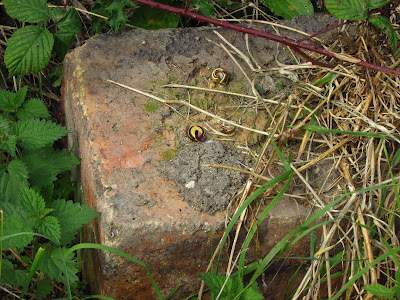
The Song Thrush is a small, shy thrush. Its upper parts are a rich brown colour, with its white chest speckled with tear-shaped spots. It often keeps close to cover, and flies to shelter when disturbed, with a distinctive call, 'zit'. Song Thrushes can often pass unnoticed until males start singing, often very early in the year, then they appear to be everywhere. It is a loud and pleasant song, of whistled phrases repeated several times at regular intervals, drawn from a wide repertoire. The presence of Song Thrushes can also be detected by their anvils, a hard surface where they crack snails in dry weather, when worms become unavailable. It feeds on worms and other ground invertebrates, and in the autumn and winter it supplements its diet with berries.
Status in Hull
Although not particularly numerous, it is a widespread, resident bird in the city, and breeds in parks, cemeteries and residential urban and suburban gardens. It is also found on the edges of playing fields and the river and drains where there is plenty of cover. The Song Thrush was included in the Hull Biodiversity Action Plan. It doesn't appear to be declining in Hull.
Conservation
The Song Thrush is a UK Amber Listed species due to population declines. Between 1970 and 1998 the population fell by 56%, possibly due to changing farming practices and pesticide use. There has been some recovery since then, but the population density remains much lower than in the past.
Management
Avoiding pesticide use in gardens and parks (including slug pellets). Sensitive management of hedgerows, avoiding trimming during the breeding season and berry season, and a layer of scrubby understorey in parks and gardens should encourage Song Thrushes in the city.
 |
| Song Thrush 'frozen' at the sight of a Sparrowhawk, by Bransholme 9/03/2021. |








No comments:
Post a Comment